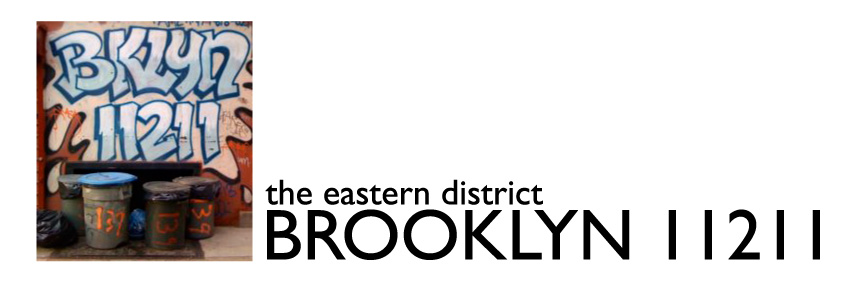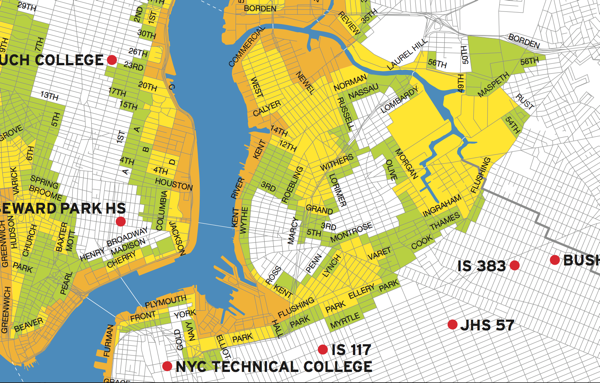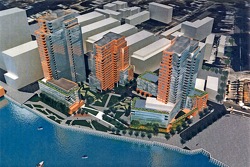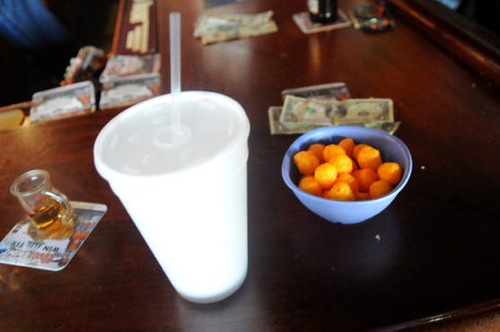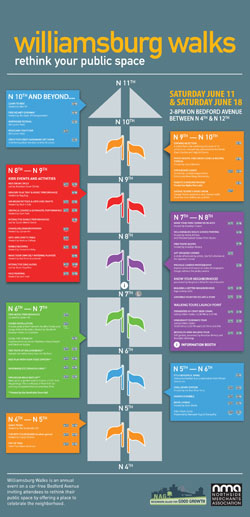Like everyone else in the known universe (or so it seems), I’ve been riding the East River Ferry a lot this week. I was a long-time user of the NY Water Taxi, which ran the East River commuter route until the beginning of May, and I plan on using the ferry when I can to commute to and from work.
For the most part, the new ferry service has been great. Yes, the schedule is a complete mess. And, at least in the evening or on weekends, you might have to wait for a second boat before you get on. But that is a largely a function of the price of the ferry for the first two weeks (FREE) – I assume that once people actually have to pay to ride the ferry that ridership will decrease (hopefully not too much, but at least enough to get rid of the lines and get the boats back on schedule).
But what about the long-term prospects for the East River Ferry Service? Some people are skeptical. And rightly so, in the macro sense (as I’ve said many times before). Ferry service will not be truly viable until it is part of the larger mass transit system – i.e., until it has the same fare structure as buses and subways, and it provides a free transfer to the buses and subways. Until that happens, intra-city ferry service will only draw a small percentage of daily commuters between Brooklyn, Queens and Manhattan.
But while I agree with Second Avenue Sagas in the macro sense, I think they are missing another part of the big picture here. The new East River Ferry service is is more than just an incremental step forward. It actually does a hell of a lot to reduce the friction of intra-city ferry service, and that could draw in passengers from well beyond the waterfront developments that now line the Williamsburg and Long Island City shore.
The East River Ferry makes a number of substantial changes to past East River commuter service:
- regular service throughout the day, vs. two or three trips in the morning and the same in the evening
- 20-minute peak-time headway, vs. one hour headway
- midtown shuttle bus service
- new ferry stops at North 6th Street (Northside) and India Street (Greenpoint)
Prior to the new service, ferry travel was pretty much a non-starter for anyone living north of Grand Street, and certainly for residents of Greenpoint. Now, many residents of Greenpoint and the Northside can walk to a ferry in well under 10 minutes (not just the residents of the waterfront condos, but the rest of us). Plus, the increased frequency means that commuters are less beholden to a schedule – with 7 to 10 boats in the morning and evening rush, the penalty for missing a boat is much less severe.
Now, people who work in midtown can use the free shuttle bus to get to the center of the island. And people who live in North Brooklyn and work in DUMBO now have a much quicker and more pleasant way to get to work.
All of this, as I said, reduces the friction of ferry service. And that, in turn, could change the way people move around the city. Anecdotally, I’ve seen this from a number of people. A neighbor who works at Broadway in the 30s, who is taking the ferry and free shuttle bus, and will probably continue to do so when the paid service starts. A couple of women on the bus, who are excited to have an alternative to the L train. Co-workers who can now get from Northside to Lower Manhattan without going near the L train.
In fact, the biggest selling point for the ferry might just be the L train. For a lot of people, avoiding that train at least once a day is worth an extra $2.00 or so. (If the L train is the biggest selling point, the G train is a close second – for Greenpoint residents who work in Midtown, life just got a whole lot better.)
Yes, most of this happens because of city subsidies (but we subsidize train and bus service too). And none of this in and of itself changes the systemic problems of making (unsubsidized, stand-alone) ferry service viable in the long term. But the City has made an important move here – its investment in the ferry system finally breaks the chicken-and-egg cycle that the Water Taxi was stuck in. As a result, ferries are now a sensible commuting option for a lot more residents of Brooklyn and Queens. Which, in turn, could make ferry service profitable and therefore viable in the long term.
If that turns out to be the case, I want to a put in a plug for a Houston Street stop next (with a free shuttle bus, please).
